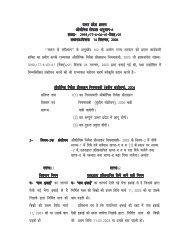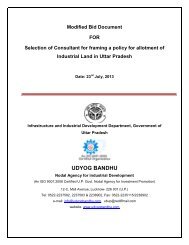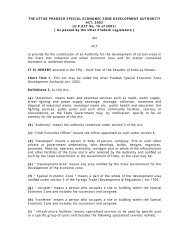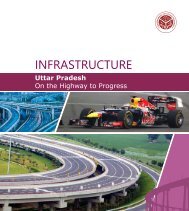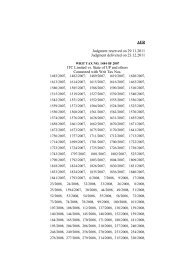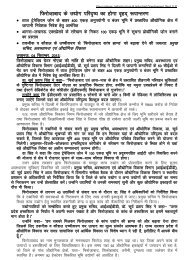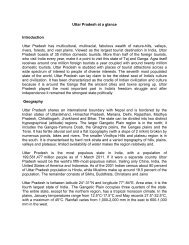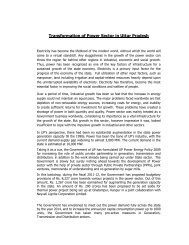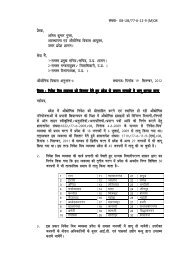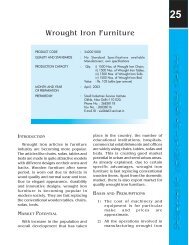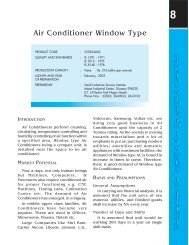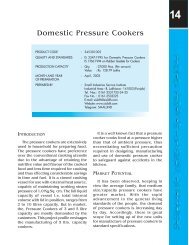PART - III - Udyog Bandhu
PART - III - Udyog Bandhu
PART - III - Udyog Bandhu
Create successful ePaper yourself
Turn your PDF publications into a flip-book with our unique Google optimized e-Paper software.
Terminal Value =105 * (1 + 0.05) / (0.1655 - 0.05) = Rs. 951 millionThis is further discounted to the valuation date to provide the contribution of continuing cashflows in the total net present value. This net present value is commonly known as the"Enterprise Value" (EV) which is the sum of value of debt as well as equity. To arrive at theEquity value, the outstanding net debt as on the valuation date is deducted from the Enterprisevalue.Figure 6: Valuation of Company X based on DCF methodologyRs millionRs millionPrimary value 361Terminal value 951Enterprise value 1,311Add: Value of surplus land outside factory area (assumed)@ 200Less: debt (assumed) -600Equity value of Company X 911@ This is being shown to illustrate that DCF captures only cash flows from corebusiness. Therefore, the non-core asset value should be added to arrive at EV.The DCF methodology is the most appropriate methodology in the following cases:Where the business is being transferred / acquired on a going concern basis;Where the business possesses substantial intangibles like brand, goodwill, marketing anddistribution network, etc;Where the business is not being valued for the substantial undisclosed assets it possesses.The DCF methodology is considered to be the best methodology for valuation the world overbecause it takes into account all the factors relevant for valuation. It takes into consideration allthe cash flows available to stakeholders of a firm and the necessary outflows, as estimated forthe future. Further, the net present value takes into account the cost of debt, cost of equity andtarget capital structure. It also takes into account the risks to which the enterprise isexposed. The discount rate (i.e. the average expected return on capital employed) is based onthe overall risk perception of the business. It also takes into account the value of the non-coreassets of the company. Any business has two kinds of assets - core assets that are a part of thebusiness and non-core assets that are not directly utilized as part of core operations and hencecan be treated as surplus assets. The asset value of core assets is reflected in the cash flows ofthe company and, therefore, should not be added separately to it. However non-core assets arenot reflected in the cash flows. Therefore, asset valuation of non-core assets should be doneseparately and should be added to DCF valuation.Being fundamentally driven by future business plan of the company and associated cash flows,a prudent DCF valuation should be able to capture the capital costs for renovation andmodernization of plant and machinery. The age and condition of assets like plant andmachinery and their replacement value would be relevant for estimating expenditure on theirreplacement whenever necessary. This expenditure will reduce cash flows and DCF value.Valuation of plant and machinery would be a relevant item that would influence the DCFvaluation. For example, a person acquiring a company operating a fleet of taxis would examine143



